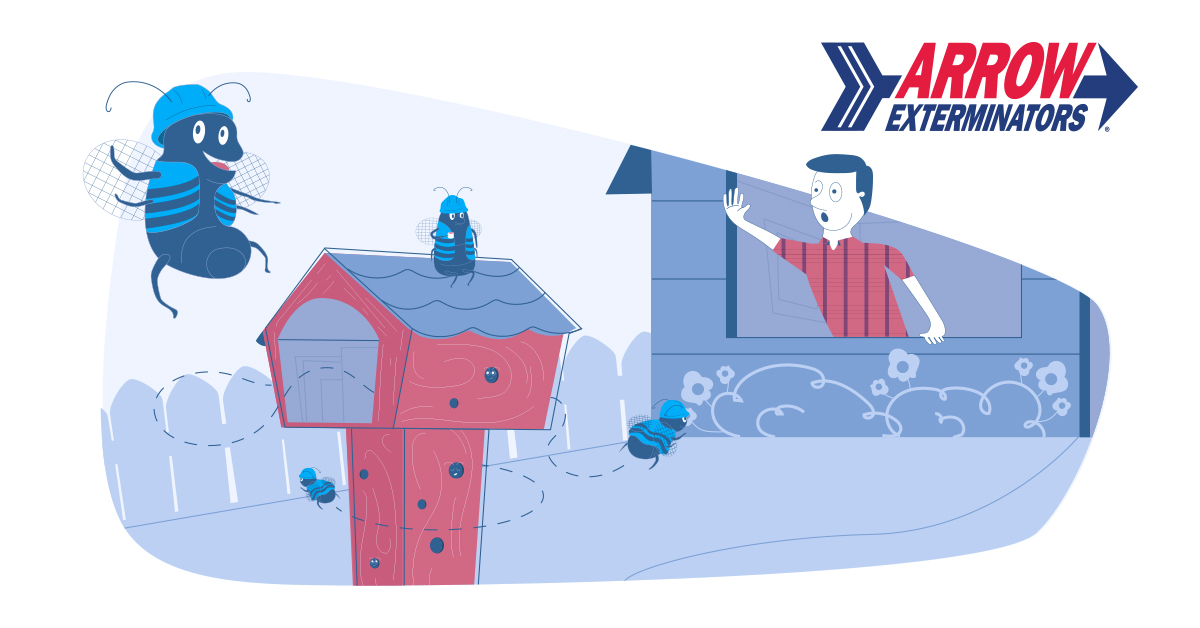Carpenter Bees: Giving Termites a Run for Their Money
Over the years, Arrow Exterminators has educated countless customers on one of the South’s most notorious pests - termites. With the potential to cause more than $5 billion in structural damages each year, and often not covered by homeowners' insurance, termites are a definite threat to homes. But, there is another pest that is giving termites a run for their money - and yours too - carpenter bees.
Recently, Arrow has been receiving more and more calls about these wood-boring pests, with customers concerned about huge bees swarming around their deck or eaves. Carpenter bees are most active in spring, when they begin to emerge from hibernation and build their nests. Sometimes called boring bees due to their nesting habits, they like to make their home in soft woods such as cedar, pine, redwood and cypress. While they prefer bare, weathered and unpainted wood, they will drill holes through painted or stained wood to build their nests.
Carpenter Bees vs. Other Bees
More than twice the size of honeybees, carpenter bees bear a close resemblance to bumble bees. The major difference in appearance is that their abdomens are bare, shiny and black. Male carpenter bees do not have stingers, but can be extremely aggressive, often hovering around and diving at those who are near their nest. Female carpenter bees, on the other hand, have stingers, but will only attack if provoked. While honeybees build their nests in trees, or under the eaves of buildings, and bumblebees nest in the ground, carpenter bees create their nests by drilling holes into wood.
Carpenter Bees vs. Termites
Unlike termites, carpenter bees do not feed on the wood they bore into. Because they do not eat the material, one of the telltale signs of a wood boring bee infestation is the sawdust-like debris around their access point in a structure. Their nests usually consist of tunnels 1/2 inch wide and 6-10 inches long. The tunnels are divided into several small cavities, each meant to house a separate larva. While initially their damage can be less extensive than that of termites, over time the bees will continue to tunnel further into the wood from the same access point. A prolonged infestation can result in networks of tunnels up to 10 feet long. These networks compromise the integrity of the wood, causing major structural damage to decks, doorframes, wooden shingles, fences, windowsills and outdoor furniture. And, like termite damage, their cost is often not covered under homeowners insurance.
Preventing Carpenter Bee Damage
The best way to prevent carpenter bee damage is to seal, paint or stain any exposed wood surface. While these pests might still try to nest in the wood, it will be a less desirable option than the weathered, unprotected wood they prefer. If possible, consider using a hardwood for exterior surfaces and trim to act as an additional deterrent.
If you do notice a swarm of carpenter bees in your area, be sure to contact a pest professional immediately to avoid an infestation, as well as potential costly damages to your home.






 YouTube
YouTube Facebook
Facebook Twitter
Twitter Instagram
Instagram